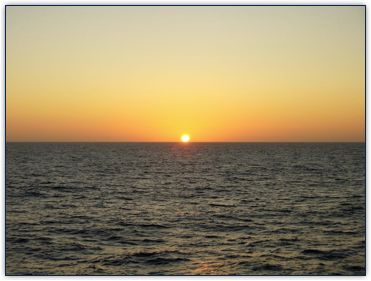
|
 |
 |
 | R/V Marcus G. Langseth leg MGL0910 conducted a multi-scale seismic tomography experiment on the Endeavour segment of the Juan de Fuca Ridge (ETOMO). The study was supported by the National Science Foundation. During the 30-day leg, 68 four-component, ocean bottom seismometers (OBSs) were deployed at 64 sites throughout a 90x50 km2 area to record seismic energy from the 36-element, 6600 cu. in. airgun array of the R/V Marcus G. Langseth. At the segment scale (~90 km along axis), the ETOMO experiment will constrain the nature of sub-ridge mantle flow and the pattern of melt transport from the topmost mantle to the crust beneath the entire Endeavour segment. These ‘undershoot’ data will provide a direct test of competing models for the origin of ridge crest segmentation and, in particular, provide critical data for determining if skew of mantle upwelling and melt transport is a common phenomena beneath spreading centers. Also at this scale, the ETOMO data will provide direct measurements of crustal thickness which will be used to understand the history of segment-scale magma supply. At an intermediate scale of approximately 60 km along axis and 20 km across axis, the ETOMO experiment will constrain the size, shape, and distribution of crustal magma bodies that fuel the Endeavour hydrothermal system. Data from the ‘crustal grid’ of seismic surveying will provide one of the largest 3-D images of a crustal magmatic system for any volcano on Earth. At a smaller scale that is focused on the vent fields themselves, data from ETOMO will constrain the physical properties of the reaction zone between the magmatic and hydrothermal systems. Taken as a whole, data from the ETOMO experiment will be able to track the seismic signature of heat and mass transport from the mantle to the seafloor at the Endeavour segment, thereby achieving one of the primary goals of the RIDGE 2000 program for the Endeavour Integrated Study Site.
During MGL0910 a single deployment of 68 OBSs at 64 sites was conducted in order to record active-source data generated by the Langseth’s airguns. The ocean bottom receivers were from the NSF-supported Ocean Bottom Seismograph Instrument Pool (OBSIP); 45 and 23 OBSs were provided by the Scripps Institution of Oceanography (SIO) and the Woods Hole Oceanographic Institution (WHOI) OBSIP groups, respectively. Four of the SIO OBS were experimental designs. All 68 OBSs were successfully recovered. By site, the data return rate appears to be excellent; exact percentages will require more analysis, but initial indications are close to 99%. The seismic source throughout the experiment was the Langseth’s 36-gun array, with a total volume 6600 cu. in. Airgun data were collected along 2500 km of track line at a typical shooting interval of 180 to 210 s (average shot spacing of 400 to 500 m). Altogether the source-receiver distribution resulted in a seismic experiment with an aperture of approximately 90 km in the along-axis direction and 60 km in the cross-axis direction. In addition to the seismic data, swath bathymetry, gravity and magnetics data were collected throughout the region.
The structure of this report is as follows: The sections prior to the appendices briefly summarize the scientific and operational objectives, the events that transpired during the cruise, and the overall quality and characteristics of the seismic data. The remainder of the report contained in the appendices is primarily of a technical nature and useful to someone working with the ETOMO data. Parts of this report were contributed by Emilie Hooft, William Wilcock, Anthony Johnson, David Martinson, Kohtaro Araragi, Troy Durant, Ruth Price, Dax Soule, Robert Weekly, and Anne Wells.
|
 |
 |
|
 |
